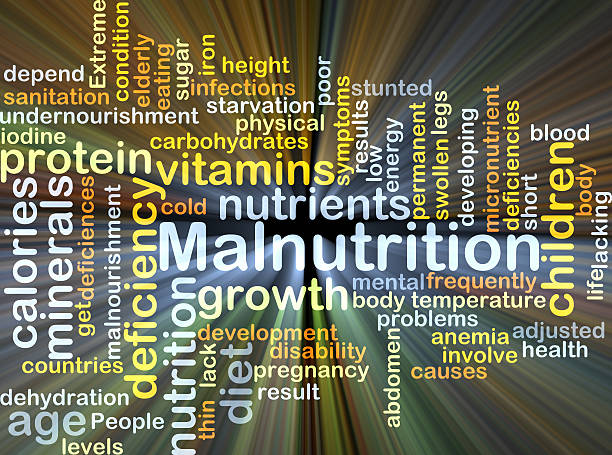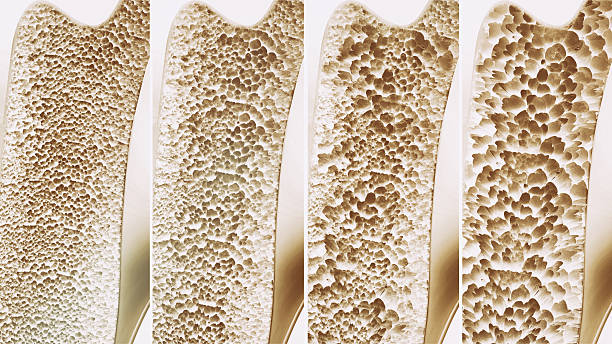
According to the World Health Organization (WHO), iron, vitamin A, and iodine are the most common micronutrient deficiencies worldwide. These results in several micronutrient deficiency diseases that can be fatal to one’s health. More than two billion people are estimated to be suffering from micronutrient deficiencies.
Aside from these three nutrients, there are other nutrient deficiencies of calcium, vitamins, and folates. Nobody should downplay the importance of micronutrients in the body, and the fact that they are called micronutrients doesn’t mean you should discard them entirely from your diet.
I have had deficiencies in vitamin D and iron, which were linked to chronic fatigue, joint pain, mood swings, and a diagnosis of anemia by my doctor. The risks are more severe than most, and it is vital to understand how to monitor and address micronutrient deficiencies.
Nutritional deficiency is a cause for national concern because, according to statistics, 20% of deaths worldwide are caused by nutritional deficiency diseases. Not only that, but it also claims more than 600,000 deaths in the United States alone!
The body needs these micronutrients to carry out certain functions at the cellular level and beyond. The unavailability of these nutrients in the body and diet results in the micronutrient deficiency diseases that we’ll discuss in this post.
I’ll show you the common micronutrient deficiency diseases, causes, and sources.
RELATED POSTS:
How to live with multiple chemical sensitivity in Fibromyalgia
11 Mold toxicity symptoms and harmful effects on humans body
Easy tips for Living with endometriosis | causes & types
Easy Fibromyalgia fatigue management tips for Fibro patients

What are micronutrients?
Micronutrients are nutrients that are required by the body but in moderate quantities; these nutrients cannot be produced by the body and are only acquired through your diet.
Examples of micronutrients include iron, zinc, calcium, magnesium, iodine, copper, vitamin K, vitamin B12, potassium, manganese, etc.
The number of micronutrients needed by the body is small compared to the number of macronutrients needed. The differences in the required nutrients aren’t based on how important they are but on how many functions they carry out. All functions carried out by nutrient intake are essential, and this is why deficiency of these micronutrients can lead to certain diseases.
For example, the amount of carbohydrate (macronutrient) needed by the body is more than the amount of iodine (micronutrient) needed.
This is not necessarily because carbohydrates are more important than iodine, but the functions differ. The body needs iodine to make thyroid hormones, an essential metabolic activity that is one of its primary functions, while carbohydrates are mainly for energy.
What is a micronutrient deficiency?
Micronutrient deficiency occurs when there is an insufficient amount of certain micronutrients like vitamins and minerals in the body for an extended period. It could be a result of different factors, including starvation or malnutrition.
The insufficiency of micronutrients in the body causes what is known as micronutrient deficiency diseases. For example, iron deficiency causes anemia, iodine deficiency causes goiter, and vitamin K deficiency can result in hemorrhage.
The danger of micronutrient deficiencies.
Is it dangerous for your body to lack micronutrients?
Yes, and these are some reasons:
They cause certain diseases.
As I stated earlier when I was defining micronutrient deficiency, a lack of micronutrients can be the cause of certain diseases. This is because each micronutrient has specific functions to play in the body. When they are unavailable, the body’s metabolic activities can be halted or incomplete, leading to the onset of certain diseases or aggravating existing ones.
They aggravate diseases.
Nutrient deficiencies can aggravate certain clinical diseases because some deficiencies can affect immune functions, limiting the body’s ability to defend itself.
They increase the risk of chronic diseases.
Micronutrient deficiencies can increase the risk of some chronic diseases. For example, one of the risk factors for arthritis is insufficient calcium. So, having calcium deficiency can increase the risk of arthritis.
Other chronic diseases might be affected by deficiency in certain nutrients.

Common micronutrient deficiency diseases.
There are different micronutrient deficiency diseases in the world today, but here are some of the more common ones:
1. Osteoporosis
Osteoporosis is one of the micronutrient deficiency diseases affecting the bones; it weakens the bone and causes what is known as ‘spongy’ or porous bones. A spongy bone means your bones are more fragile than they should be and can fracture easily.
Although osteoporosis can be age-related, the risk increases when there is a low amount of calcium and vitamin D in the body. Also, having celiac disease (a diseased condition where the body cannot absorb certain nutrients) and alcoholism can increase the risk of osteoporosis.
Osteoporosis is usually asymptomatic and is usually diagnosed after a fracture.
You can reduce osteoporosis risk by increasing calcium and vitamin D daily.
Sources of calcium include broccoli, yogurt, milk, salmon, dairy products, fish, vegetables, and figs.
Sources of vitamin D include egg yolk, beef liver, cheese, red meat, and other fortified foods.

2. Osteomalacia
Osteomalacia is a micronutrient deficiency disease caused by vitamin D deficiency, and like osteoporosis, it also affects the bones.
Osteomalacia is defined as the softening of the bones, which occurs as a result of problems with the bone formation or bone building. Vitamin D deficiency is one of the leading causes of osteomalacia because it is an essential nutrient that helps the body to absorb calcium in the stomach.
Symptoms include bone weakness, tiredness, and muscle pain. You need to expose yourself to a lot of early morning sunlight to increase the amount of vitamin D in your body because vitamin D is made within the skin from exposure to UV rays in the sun. You can also get vitamin D from sources like dairy and fish.
3. Goiter
Goiter is a micronutrient disease caused by a deficiency of iodine. Iodine is an essential part of thyroid hormone production. When there are insufficient amounts of iodine to produce thyroid hormones, the pituitary gland will send a signal to the thyroid to make more—the increased signal results in the abnormal growth of the thyroid gland.
Other causes of goiter include inflammation, pregnancy, thyroid cancer, or nodules.
4. Hypothyroidism
This is another disease that is caused by insufficient iodine in the body. Iodine is an essential mineral necessary for several vital functions in the body, like brain development, growth, bone maintenance, and metabolic control. The thyroid needs iodine to be able to produce thyroid hormones.
Hypothyroidism, also called underactive thyroid disease, is the term used to describe a condition where a person’s thyroid gland does not produce enough thyroid hormone.
The risk of having hypothyroidism increases if you are a woman or you have a history of thyroid disease, and symptoms can include constipation, fatigue, dry skin, joint pain, muscle weakness, and reduced heart rate.
Including enough iodine sources in your diet will help to increase the amount of iodine in your body.
Seaweed is the richest source of iodine. You can use iodized table salt, which is fortified with iodine; shellfish, dairy products, and eggs are all sources of iodine. You can also take iodine supplements to increase your daily intake of iodine.
5. Anemia
Anemia is one of the most common micronutrient deficiency diseases caused by inadequate nutrient intake – iron. Iron is a micronutrient the body needs to produce hemoglobin, an important part of the red blood cells. Hemoglobin helps the red blood cells to transport oxygen throughout the body.
Without hemoglobin, the red blood cells cannot perform their function, which leads to an inadequate supply of oxygen to different parts and organs in the body.
Iron-deficiency anemia is the most common type of anemia; symptoms can include pale conjunctiva, tiredness, shortness of breath, headaches, dizziness, and lightheadedness.
Anemia can also be caused by heredity, chronic conditions like celiac disease, vitamin deficiency, or red blood cell dysfunction.
Young children and women of childbearing age are more at risk of anemia, which means that these groups of people should be more deliberate about including iron in their diet or taking iron supplements.
Sources of iron include lean meat, seafood, beans, vegetables, and nuts.
6. Hemorrhage
Hemorrhage is one of the common micronutrient deficiency diseases caused by a lack of vitamin K. Vitamin K is an essential vitamin that helps with blood clotting in the body, which is the main reason why a deficiency in this vitamin results in excessive bleeding.
Infants are more likely to get vitamin K deficiency. Other risk factors include people who take blood thinners or anticoagulants, increased amounts of vitamin A or E, and certain clinical conditions.
Sources of vitamin K: vegetable oil, chickpeas, Green tea, blueberries, soybeans, and figs
7. Night blindness
This is one of the micronutrient deficiency diseases that different health conditions can cause. For example, conditions like celiac disease, diarrhea, and even liver cirrhosis can affect the body’s ability to absorb vitamin A even when it is included adequately in your diet.
Night blindness is a vitamin A deficiency disease characterized by poor vision in dimly lit rooms or at night. It is not a complete loss of vision during the night; it just impairs your vision and makes it difficult to see things clearly in those situations.
Vitamin A, also called retinol, plays a part in converting nerve impulses to images in the retina. A deficiency of this vitamin can cause impairment in this process leading to night blindness.
8. Beriberi
Beriberi is a disease caused by insufficient intake of vitamin B1, also called thiamine. Thiamine is needed by the body to break down and digest food and helps with metabolism, muscle, and nervous system functions. This is why beriberi can affect the central nervous system as well as the cardiovascular system.
Beriberi is characterized by impaired sensory, motor, and reflex functions.
It is a serious health condition that can even lead to death if left untreated. Risk factors include age, alcoholism, diabetes, dialysis, babies with thiamine-deficient mothers, and a history of bariatric surgery.
Symptoms of beriberi include loss of appetite, weakness, shortness of breath, swollen feet, and swollen legs.
Sources of thiamine include pork, green beans, sunflower seeds, thiamine-fortified foods, and yogurts.

9. Alopecia
Vitamin D deficiency has been linked to causing alopecia and other hair-related problems. Vitamin D stimulates the growth of hair follicles, which may be affected when there is insufficient intake of the vitamin.
Alopecia, also known as alopecia areata, is a disease that causes patchy hair loss, and studies have supported the connection between vitamin D deficiency and alopecia.
10. Hypocalcemia
Hypocalcemia is a vitamin D deficiency disease that occurs when calcium levels in the blood are too low.
Although most of the calcium in the body is stored in the bones, some amounts of calcium are also needed in the blood because it helps the muscles contract, assists in blood clotting, and helps the nerves work. When calcium levels in the blood are insufficient, the body takes calcium from the bones, which causes the bones to weaken.
Vitamin D is implicated in hypocalcemia because it helps the body to absorb calcium.
Hypocalcemia can be asymptomatic, but symptoms can range from brittle nails, muscle cramps, and dry skin to abnormally coarse hair when symptomatic. Untreated hypocalcemia can also result in neurologic and psychological symptoms like hallucinations, confusion, and depression.
Sources of vitamin D include cod liver oil, tuna, cheese, tofu, soy milk, beef, and fortified foods.
11. Hypomagnesemia
Hypomagnesemia is a micronutrient deficiency disease caused by low levels of magnesium in the serum, mainly due to inadequate dietary intake or decreased magnesium absorption.
Magnesium is involved in more than 300 metabolic reactions in the body, including DNA synthesis, bone metabolism, protein synthesis, and even cardiac functions.
Hypomagnesemia symptoms include vomiting, appetite loss, muscle cramps, and nausea. In worse cases, seizures, numbness, abnormal heart rhythms, and muscle spasticity may occur.
Sources of magnesium are almonds, spinach, whole wheat bread, avocado, peanuts, halibut, and cashews.
12. Hyperkeratosis
Hyperkeratosis, specifically follicular hyperkeratosis, is a micronutrient deficiency caused by vitamin A deficiency; vitamin B and C deficiency can also cause it. Follicular hyperkeratosis is manifested as red-brown follicular papules clustered around the elbows and knees. However, they might move towards each extremity.
13. Pellagra
Pellagra is a micronutrient deficiency disease that occurs when one is deficient in vitamin B3 (niacin). Niacin is necessary for cellular functions throughout the body.
This disease presents with symptoms like diarrhea, dementia, and skin photosensitivity. Like vitamin B1 deficiency, pellagra can also lead to death if left untreated.
Sources of niacin include rice, beets, potato, oily fish, beef liver, and brewer’s yeast.

Micronutrient deficiency diseases can be as fatal as certain chronic conditions, and you must plan out your diet to include sources of different micronutrients.
In cases where you dislike certain foods, you can take these nutrients as supplements instead.
What micronutrient do you think you get less of in your daily diet? Have you been diagnosed with any micronutrient deficiency diseases before?
READ ALSO: 14 Most Common chronic diseases in older adults [2023]




0 Comments